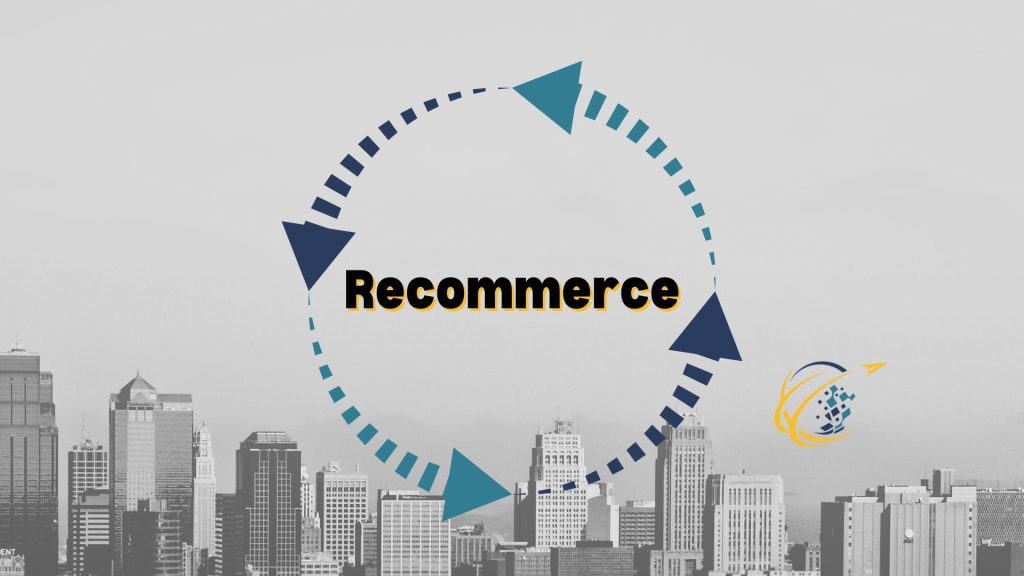Recommerce, the process of buying and selling pre-owned or secondhand goods, is rapidly gaining traction in the retail industry. As consumers become more environmentally conscious and financially savvy, re-commerce offers a compelling solution that aligns with modern values. By embracing this process, businesses meet consumer expectations and position themselves at the forefront of retail innovation.
The Rise of Recommerce in Retail
This concept isn’t new, but its popularity has surged recently. Several factors drive this trend, including increased environmental awareness, a desire for unique or vintage items, and the financial appeal of purchasing quality goods at lower prices. Recent studies indicate that the recommerce market is growing 16 times faster than traditional retail. It is projected to be worth $64 billion by 2024.
One key reason for this rise is shifting consumer behavior, especially among younger generations. Millennials and Gen Z are leading the adoption of sustainable shopping habits. In fact, 91% of Gen Z consumers express a desire to purchase from companies with sustainable business models. Recommerce aligns with these values by reducing waste and extending product lifecycles.
Besides environmental benefits, re-commerce offers economic advantages for consumers. As inflation impacts purchasing power, more people turn to secondhand markets as a cost-effective way to obtain high-quality goods. This trend is especially evident in the fashion industry, where platforms like ThredUp and Poshmark have become household names, enabling consumers to buy and sell pre-owned clothing and accessories.
How Recommerce is Reshaping Retail Strategies
The rise of recommerce is prompting retailers to rethink their business strategies. Traditional retailers are exploring ways to integrate recommerce into existing operations. They are launching resale platforms or partnering with established recommerce companies. This shift is driven by recognizing that recommerce isn’t just a trend but a fundamental change in consumer behavior.
Retailers like Patagonia, Lululemon, and Carhartt have embraced this concept by offering trade-in programs and resale options. These initiatives attract environmentally conscious consumers and build brand loyalty by extending product lifecycles. Controlling the resale process also allows brands to ensure product authenticity and quality, which is crucial for maintaining customer trust.
Additionally, technology is significantly enhancing the recommerce shopping experience. Retailers use artificial intelligence (AI) and machine learning to create personalized recommendations for consumers, helping them find secondhand items matching their preferences. Platforms are also integrating augmented reality (AR) features that allow customers to visualize products before purchasing, further enhancing recommerce’s appeal.
Challenges and Opportunities
While the growth of recommerce presents numerous opportunities, it also comes with challenges. One of the primary challenges is ensuring the quality and authenticity of secondhand goods. Consumers need to trust that the products they purchase are in good condition and accurately described. To address this issue, many recommerce platforms have implemented rigorous inspection processes and offer guarantees or return policies to protect buyers.
Another challenge is the logistical complexity of managing a recommerce operation. Unlike traditional retail, recommerce involves handling a diverse range of products, each with its condition and history. This requires robust inventory management systems and efficient logistics to ensure that items are processed, listed, and shipped in a timely manner. However, with the right infrastructure and technology, these challenges can be effectively managed, allowing businesses to scale their re-commerce operations successfully.
Despite these challenges, the opportunities in the recommerce space are vast. As consumer demand for sustainable shopping options continues to grow, businesses that embrace recommerce stand to benefit from increased customer loyalty, brand differentiation, and access to new revenue streams. Additionally, by participating in the circular economy, companies can reduce their environmental footprint and contribute to a more sustainable future.
The Future of Recommerce in Retail
The future of recommerce in retail looks promising, with continued growth expected across various sectors. As more brands recognize the value of this concept, we can anticipate an increase in the number of retailers offering resale options and trade-in programs. Furthermore, advancements in technology will continue to enhance the recommerce experience, making it more seamless and accessible for consumers.
In conclusion, recommerce is transforming the retail landscape by offering a sustainable and economically viable alternative to traditional retail. Businesses that embrace this concept are not only meeting the evolving needs of consumers but also positioning themselves as leaders in the movement towards a more sustainable and circular economy. As the recommerce market continues to expand, it will undoubtedly play a significant role in shaping the future of retail.


